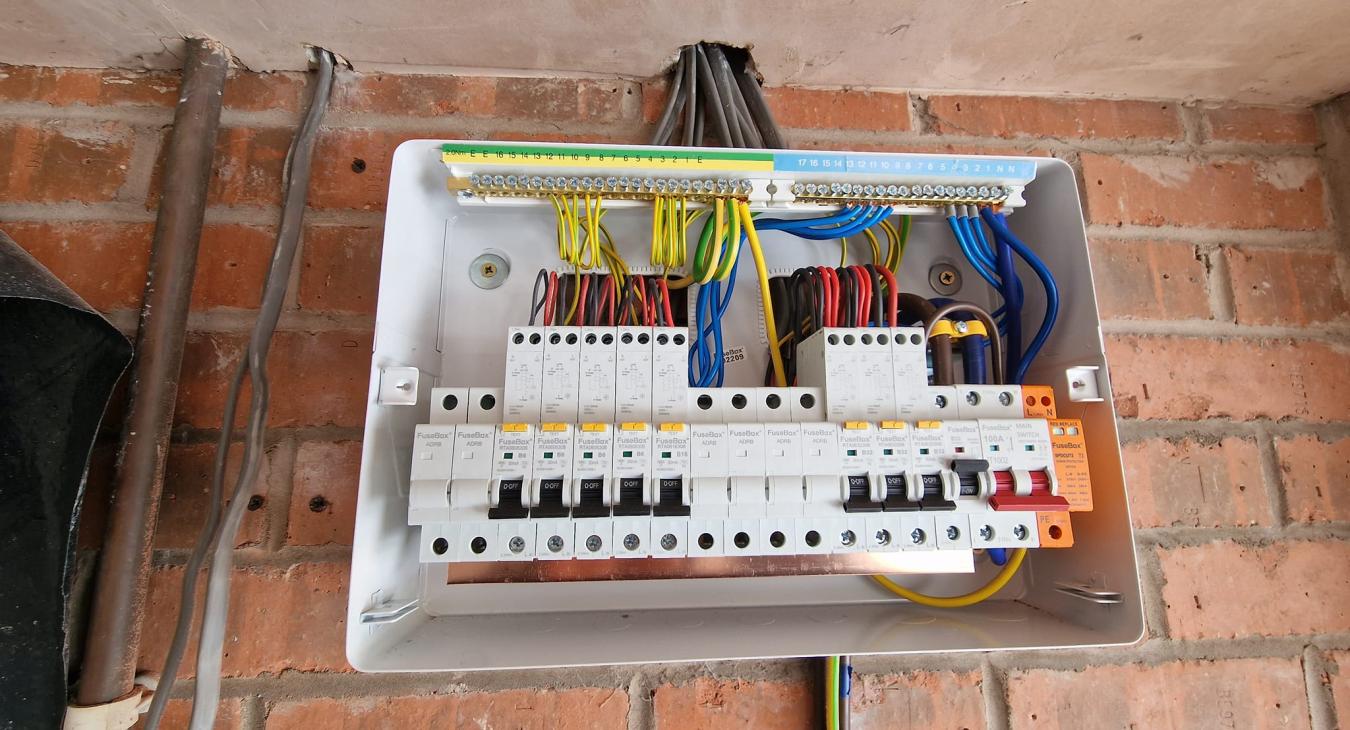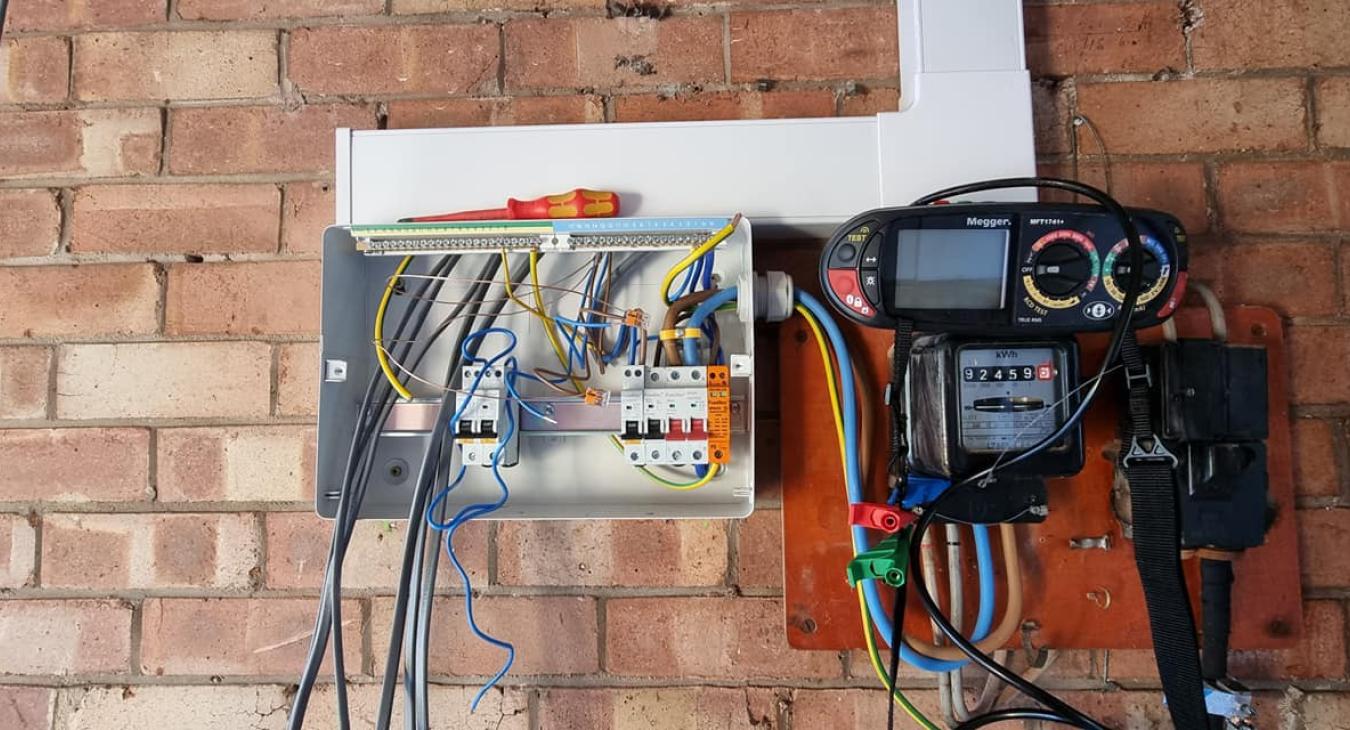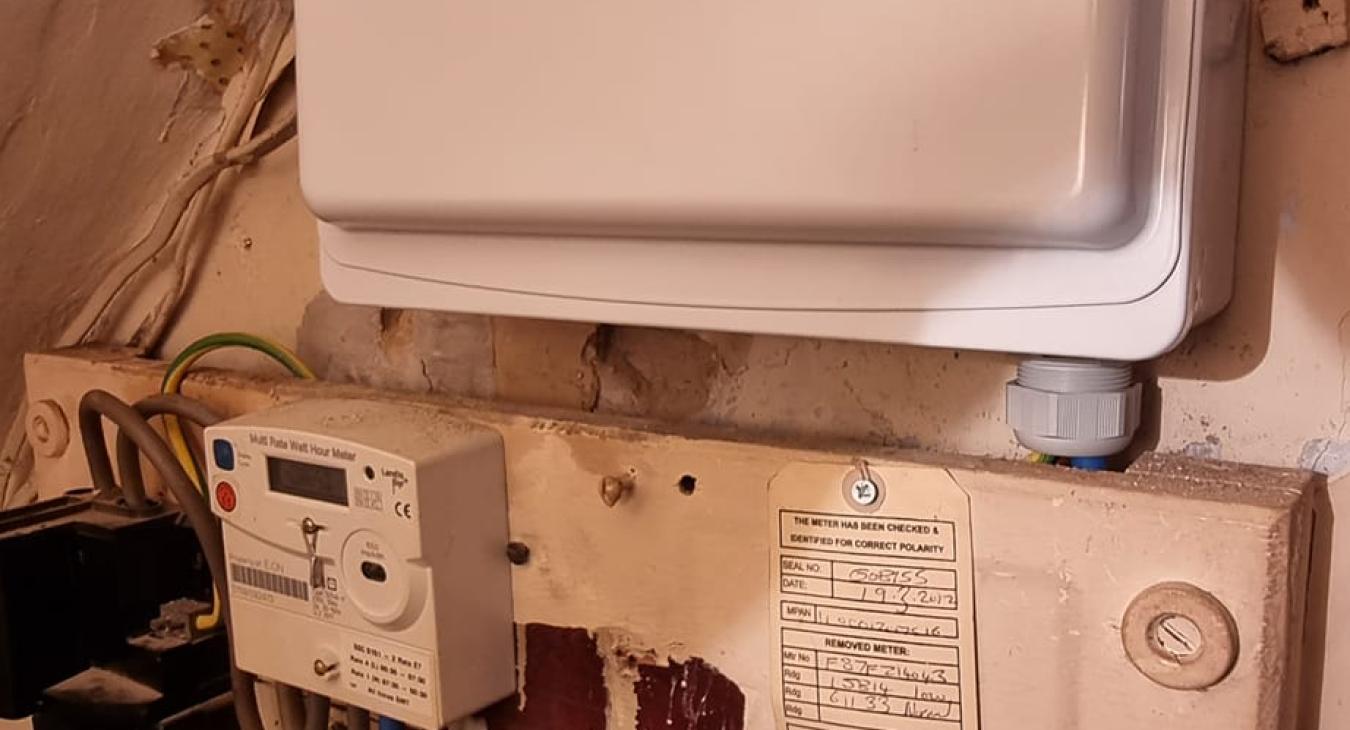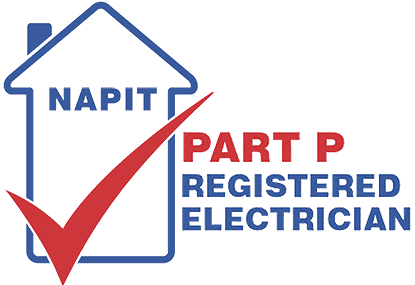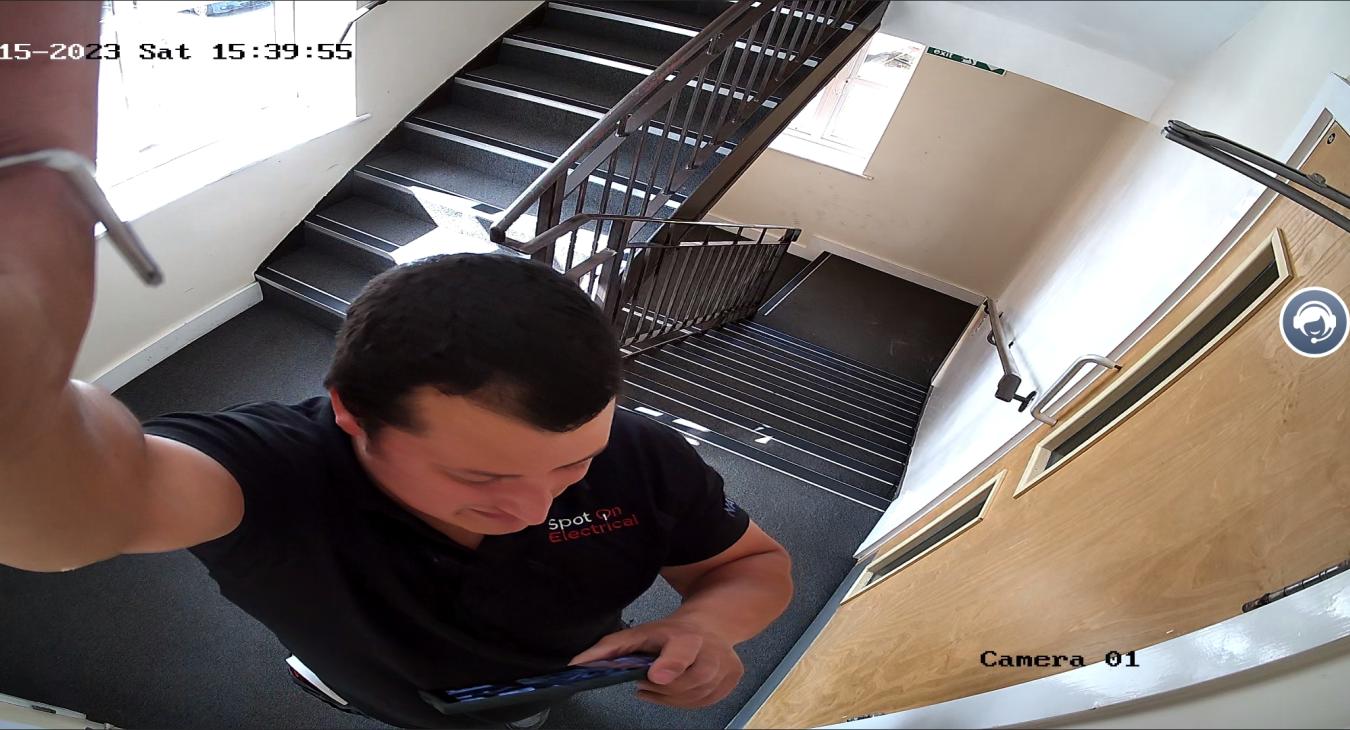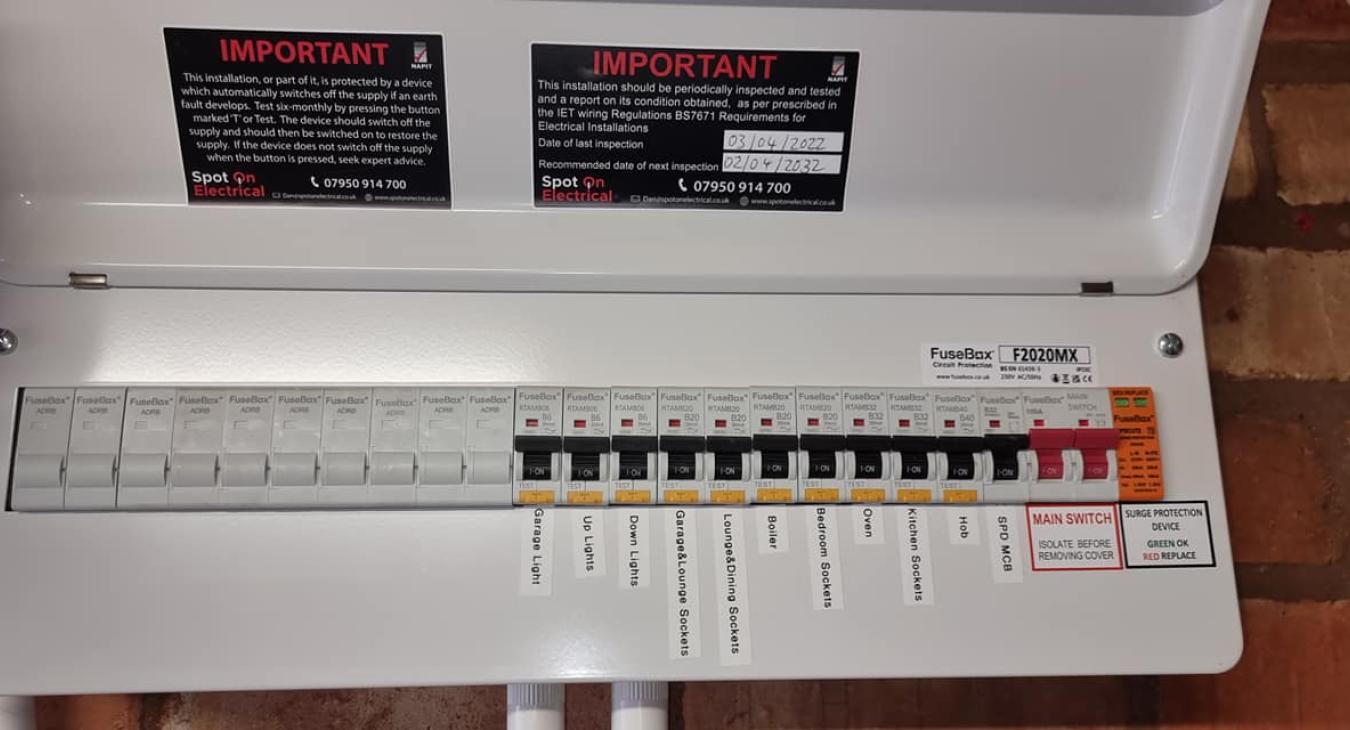Having carried out many consumer unit upgrades in Swadlincote, Derby, Nottingham, Birmingham, Lichfield, Tamworth and Leicester, we get asked a lot for a consumer unit guide or instruction manual.
We have therefore decided to create a guide for how to use your new consumer unit.
In normal operation your consumer unit should not need any maintenance apart from, a EICR (Electrical Installation Condition Report), which is usually every 5-10 years for a domestic property, (the date in which an EICR is due will be on the Electrical Installation Certificate). It is recommended that you push the test buttons on your RCBOs once every 6 months or so but bare in mind this will cut the power to the circuit.
If you open the metal flap covering the switches of your new Full RCBO Consumer Unit, you will see on the far right hand side, the SPD (Surge Protection Device). SPDs help to protect your electrics and your home against electrical surges or transient over voltages. SPDs do not have a switch on them, but they will sometimes have a MCB that is just to protect the SPD against over-current. This will be labelled is “SPD MCB” this MCB will be to the left of the Main Switch.
The linked main switch is where the main cables (tails) coming into your consumer unit are connected to, the main switch is usually RED and should be in the 'up' position, this will not trip, it is basically a big switch that will cut the power to the entire consumer unit when switched off.
To the left of the main switch will be all the RCBOs, which are supplying your individual circuits as labelled below each RCBO. The levers for these will be in the up position when 'on', and in the down position when 'off'. They will have a little yellow/orange push button on them which tests the mechanical side of the RCD, we recommend that you push the test or 'T' button on each RCBO every 6 months.
What should I do if my consumer unit trips?
If one of your RCBOs/circuits has tripped then this is likely due to a fault on the circuit.
If it is a socket circuit then you should up plug everything on the circuit and then try to reset the RCBO. Don't forget about devices that may be plugged in out of sight, for example, fridges or washing machines, which unfortunately are some of the most common causes of tripping on a socket circuit.
If the RCBO doesn't trip straight away, slowly plug everything back in, to see which device is causing the circuit to trip, just make sure you turn the switch off on the socket before plugging in, and then switch it on once plugged in.
If the RCBO that has tripped is lighting, then you can carry out the same method of trouble shooting by ensuring that all the lights are turned off and then trying to turn the RCBO back on.
Unless the cause of the problem is something plugged in or a light bulb that you can remove, the chances are you will need a fully qualified electrician, to find the fault.
The beauty of a Full RCBO Consumer unit is that if one of the RCBOs trips it does not effect all the other circuits, so the problem should be isolated to just one circuit. In the past consumer units had 2 RCDs (know as dual RCDs) that would each protect half of the circuits to the entire property. The problem being that a fault on one circuit could cause half the property to loose power. Some older consumer units just had one RCD supplying the entire property.
Electrician in Swadlincote
Spot On Electrical (Midlands) Ltd are a small team of fully qualified electricians in Swadlincote. We cover Swadlincote, Derby, Nottingham, Birmingham, Lichfield, Tamworth and Leicester, carrying out Commercial, Domestic and Industrial, electrical installation and testing.
Contact info:
📧 Please fill in our contact form here.

